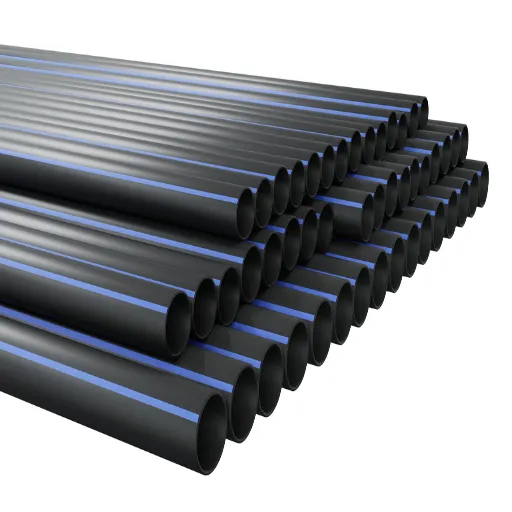High-density polyethylene (HDPE) fittings are an essential component in modern piping systems, offering exceptional durability, efficiency, and versatility. Among these, the electrofusion 90° elbow stands out as a critical connector designed to facilitate precise and reliable directional changes in pipeline installations. This article serves as a comprehensive guide to understanding the features, benefits, and applications of the electrofusion 90° elbow, ensuring optimal performance in a range of industries. Whether you are a professional engineer, a contractor, or simply exploring HDPE pipe solutions, this guide will provide you with valuable insights into why these fittings are indispensable in achieving seamless and long-lasting connections.
Understanding Electrofusion Technology
What is Electrofusion?
The electrofusion process is a means of joining polyethylene pipes and fittings through an electrical process with precise control. The technique produces heat from electrical currents running through resistive wires embedded in the fitting. This heat melts the outer surface of the pipe and the inner surface of the fitting, allowing them to fuse strongly as the heat is removed and both surfaces solidify. The joint is homogeneous and hence does not require any sealants or adhesives.
High precision welding, or electrofusion weld, must be carried out in any system where leakage or durability must be avoided. The electrofusion fitting, such as a 90°, comes with heating elements embedded in it and with connection terminals. These elements provide even heat distribution and controlled melting during fusion, something that is highly required for the joint to withstand the pressure, temperature variations, and chemical attack in other industrial or municipal applications.
The technology is especially suited for applications related to gas and water pipelines and other pressurized systems. Given its ability to form joints of high performance with very low chances of failure, it is preferred for use in utilities, water treatment, and oil and gas sectors. It enjoys prioritization as the best joining method due to the ease of use offered, irrespective of pipe sizes. Its ability to meet standard specifications and quality evaluation provides the guarantee of long-term operational efficiency.
How Electrofusion Works
Electrofusion involves a special technique of joining thermoplastic pipes, mainly polyethylene (PE) and polypropylene (PP), by a simultaneous application of heat and pressure. First, the pipe ends are cleaned, scraped of oxidation, and aligned correctly to ensure good contact between them. The coupling, which has embedded heating elements, is then positioned over the pipe ends.
Once this has been set up, the electrofusion control unit (ECU) is connected to the terminals on the coupling. An electric current flows through the heating elements, producing controlled heating which melts the inner surface of the coupling and the outer surface of the pipes. One holds the two surfaces under certain pressure during cooling, forming a strong and uniform joint. The ECU monitors and controls the whole fusion process so that the accuracy and consistency are maintained.
During the electrofusion process, the joint is created without seams, is structurally strong, and resists leakage and stress excellently. Due to the processor’s accuracy and reliability, it is well-suited for systems on which severe safety standards are imposed, for instance, gas distribution networks or potable water pipelines. Being able to ensure welds on pipes when subjected to different environmental variables, electrofusion is hence regarded as one of the most promising technologies to uphold pipeline integrity in further applications.
Benefits of Electrofusion in Pipeline Applications
Electrofusion gives some specific advantages in also guaranteeing pipeline integrity under unfavorable conditions. Given here is a detailed listing of the five generic benefits:
- Superior Joint Strength and Reliability: Electrofusion joints give tensile strength and reliability to the greatest degree. Studies showed that properly fused joints could withstand pressures over 200 psi, which is paramount when considering gas transmission and other high-pressure water settings. The fusion gave a homogeneous weld, eliminating weak points in the joints and precluding any future occurrence of joint failures.
- Resistance to Environmental Factors: Electrofusion joints have great resistance to contaminants, extreme temperatures, and chemical exposure. For instance, electrofusion pipelines are used in corrosive environments where the fused joints resist deterioration caused by chemicals such as sulfur or saline compounds. This flexibility improves the durability of pipelines in harsh conditions.
- Installation-Friendly in Tight Spaces: Small-sized electrofusion apparatus installation is easier even where there is a constrained space, such as in urban areas or underground settings. On the other hand, traditional welding will require a lot of working space, whereas electrofusion systems will facilitate joining in areas where space is a concern, thus making the whole project a bit easier to execute.
- Leakage Prevention: Imperfect temperature control and manual fusion cycles can lead to leakages. Field data suggest that electrofusion has a leak rate of up to 95% less when compared to traditional mechanical joint systems; thus, it stands tall for water pipe infrastructure.
- Long-Term Cost Efficiency: Although the initial cost of equipment may be higher, the electrofusion method allows long-term savings on the grounds of lower maintenance costs paired with a longer working life span. Good joints imply less repair service coming along over the long run, ultimately saving utilities and operators managing a vast network of pipelines.
Each of those benefits builds a case for electrofusion’s continued dominance in pipeline integrity maintenance under varied and challenging conditions.
Applications of Electrofusion 90° Elbows
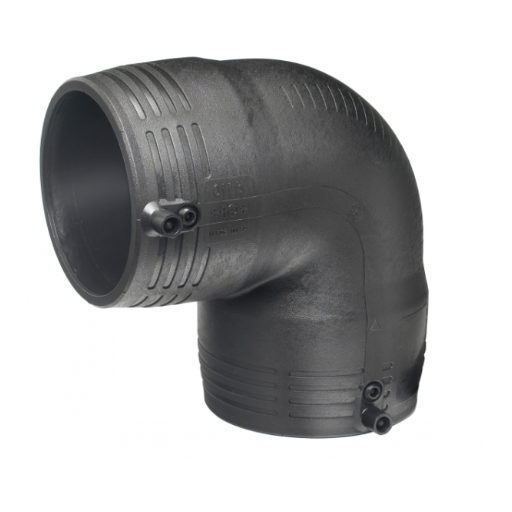
Use in Plumbing Systems
Electrofusion 90° elbows being in vogue in the modern plumbing systems are a benefit of a secure connection and hence leak-proofing them. These fittings find greater application in pressurized systems or any environment where accuracy and lasting properties are of the essence. Here are five high-end applications of the electrofusion 90° bends in plumbing systems:
- Water Supply Networks for the Residence: Electrofusion 90° elbow fittings are used to connect pipes in water supply systems of houses with such joints that are secure and durable. They are best suited for allowing water to be transported into homes, forcing them to resist various pressures and temperature variations.
- Irrigation Systems: These fittings are bona fide for agricultural and landscaping irrigation networks. They provide for water-tight connections to prevent water leakage; this prevents the water from being distributed anywhere inefficiently, thus conserving its use.
- Industrial Plumbing Installations: Electrofusion type 90° elbows are used in industrial systems for the transport of chemicals or water, or other fluids under high pressure. The ruling in industrial environments under severe conditions saves the maintenance party.
- Drainage and Wastewater Systems: Electrofusion elbows provide the smooth redirection of wastewater in complicated drainage networks. Corrosion resistance and strong joint integrity provide these for liquid waste and harsh sewage environments.
- Underground Plumbing Installations: These fittings find application mainly in buried plumbing systems where exposure to external pressures, soil movements, or corrosion may jeopardize the functioning of other types of joints. Electrofusion connections assure the long-term functioning and safety in such scenarios.
Given that their installation translates into lowered maintenance needs, increased operation efficiencies, and hence, longer operational life, electrofusion 90° elbows are necessary in varied applications.
Gas Distribution Applications
Due to their unique needs for high security, non-leakage, and withstand environmental and operational stresses, electrofusion 90° elbows play a very important role in gas distribution systems. These fittings are specially engineered to satisfy the stringent service requirements of gas pipeline infrastructure to ensure that natural gas is transported safely and efficiently. Below are five detailed applications given within the gas distribution sector:
- Urban gas networks: The electrofusion elbows find wide applications in urban pipelines, where a few compact joints help in reducing the incidence of leakage resulting from the complexity of the underground system. Their capability allows them to perform for long periods even under high-pressure conditions and variable temperatures.
- High-Pressure Gas Transmission: In high-pressure pipelines, such fittings afford strength and resilience, providing safe connections that can withstand extremely high internal pressures for marginal safety operation.
- Industrial Gas Distribution: There are operations in industrial units where gas needs to be distributed efficiently. Electrofusion elbows would ensure trustworthiness in operating sites with high joint integrity, having the capacity to handle high flows and corrosive environments.
- Gas Storage Facilities: Electrofusion elbows provide pipe connections during the construction and maintenance of gas storage infrastructure. In environments that demand strict containment efficiency, they prevent gas losses.
- Distribution in Rural Areas: Their ease of installation and ability to perform for very long distances without regard to environmental factors such as soil acidity and ground movement are some factors that show how gas distribution systems in rural and remote areas greatly benefit from electrofusion 90° elbows.
This application ensures that the electrofusion 90° elbows improve the safety, efficiency, and sustainability of gas distribution networks, which adds to the eventual reliability of critical energy infrastructure.
Water Management Solutions
Water management solutions are, therefore, pivotal to the sustainment and fortification of water distribution systems. PE fittings, including electrofusion couplings or 90° elbows, are amongst the most reliable and versatile components in water infrastructure today. These fittings are designed to make connections with no leakage in both high- and low-pressure systems so that potable water pipelines, irrigation systems, and wastewater disposal may fare better in the long run.
Through fusion with pipes and fittings by using integrated heating elements, this tech yields joints of the highest tensile strength and durability on offer in the market. Thus, it prevents such leaks that could contaminate the water supply or waste resources. Further, the corrosion resistance of PE materials ensures the best possible performance of these solutions under adverse environmental conditions such as chemical exposure, temperature variations, or soil compositions.
In urban water management, PE electrofusion fittings support the deployment of smart grid technologies by granting seamless joining capabilities to flow monitoring sensors and leak detection systems. These solutions minimize water losses and maximize operational efficiency, and thus, they confront challenges of aging infrastructure while at the same time supporting sustainability priorities, such as curbing NRW and saving freshwater for future generations.
Installation Guide for Electrofusion 90° Elbows
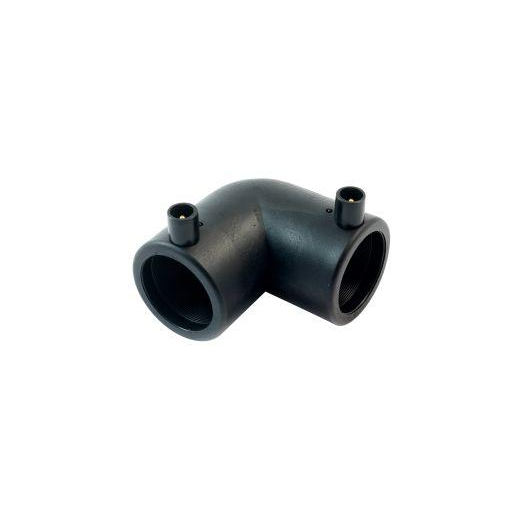
Step-by-Step Installation Process
- Preparation of Materials and Tools: Ensure that all materials are available on-site, including the electrofusion 90° elbow, pipes, and installation equipment. The tools required are usually an electrofusion machine, pipe cutting tools, a scraper for pipe surface preparation, alignment clamps, and a marker. Ensure that the materials conform to applicable standards (e.g., ISO 4437 or ASTM F1055) to prevent incompatibility problems during installation.
- Pipe Cutting and Surface Treatment: Cut the pipe ends accurately so that they are square and without any burrs. A pipe scraper is used to remove the outer surface layer from all pipe ends in such a way that material is exposed for clean fusion bonding. This stage of surface preparation is critical, as any contamination or oxidation of the surface will result in the joint not holding together. The area stripped should correspond with the marking guides on the fitting.
- Alignment and Clamping: Insert the prepared pipe ends into the electrofusion 90° elbow fitting, ensuring proper alignment. Use alignment clamps to stabilize the joint and prevent its movement during fusion. If the pipes and fittings are not aligned properly, it will result in incomplete fusion or weak joints.
- Connection to Electrofusion Machine: Connect the leads of an electrofusion machine to the fitting terminals and ensure that all connections are complete and performed according to the manufacturer’s directions for terminal connections. Today, most electrofusion machines are designed to automatically read fusion parameters from the fitting barcode to avoid human errors in selecting parameters.
- Fusion Process: First, turn on the electrofusion machine to initiate the fusion. This will energize the heating element of the fitting to produce heat, which will be controlled and used to fuse the surfaces of the pipe and fitting. Fusion time and cooling time depend on fitting diameters and properties of the materials; thus, always consult the manufacturer’s technical literature for exact data.
- Cooling Period: After completion of a fusion cycle, cooling with undisturbed joints is required. Any attempt to stress a joint by way of disturbing it during the critical cooling time will bring about bad performance from such a joint. Also, refer to the fitting for the cooling time.
- Inspection and Testing: The joint must be subjected to a large-scale visual inspection just to see if there is a uniform bead all around the pipe and fitting interface so that the relationship with fusion is established. A pressure test shall be applied as per accepted industry standards to assert the integrity and leak-tightness of the connection. Only after such confirmation shall the system be serviced.
The rigid application of these steps ensures that the joint is always dependable and will last for a reasonable time within accepted standards, and will be able to perform under operational stresses.
Tools Required for Installation
The following are some tools necessary for a consistent and high-quality installation:
- Pipe Cutter or Saw: It is used to cut pipes to the desired length. Being straight and clean is very important, as any kind of bend or dirt would hamper proper fit and fusion.
- Deburring Tool or Chamfering Tool: Removes burrs and sharp edges from pipe ends to prevent damage to fittings during assembly and assures a smooth joint.
- Pipe Alignment Clamps: Keep the pipe and fitting in alignment during fusion; the importance is to maintain uniformity and joint integrity.
- Fusion Machine: Gives heat to the pipe and fitting ends, making a strong molecular bond. A special calibration of fusion machines exists for every type of material.
- Torque Wrench: Secures fittings and meaningfully tightens connections to torque specifications recommended; hence, damage caused by over-tightening or under-tightening is avoided.
- Inspection Tools: Includes gauges, calipers, and visual inspection aids to check the dimensions and alignment of the joint before and after fusion.
- Pressure Testing Kit: A pressure test is conducted to check the integrity and leak-tightness of the installed system. Pressure testing kits usually include a pressure gauge, a pressure regulator, and certain fittings.
- Personal Protective Equipment (PPE): Ensures that the installer is protected during operations. It includes gloves, goggles, and protective clothing.
Use of these accessories makes installation simpler while ensuring that the final system qualifies all requirements of the highest industry standards, thus decreasing the possibility of its failure under operational conditions.
Best Practices for Optimal Performance
- Regular Maintenance and Inspection: Routine maintenance and inspection of the system are necessary to ensure its long-term operation. Systems must be tested for leakage, wear, and the function of valves, fittings, and regulators regularly. Using calibrated diagnostic instruments, parameters such as pressure levels are measured and kept within the recommended tolerances. Any deviation must be taken care of before the system starts operating inefficiently or fails.
- Calibration and Monitoring: With a pressure gauge and a flow meter, accurate calibration is the key to ensuring the system is operated properly. Calibration methods should meet standards set by trade bodies and ensure equipment is certified to be regarded as accurate. In this setup, performance is enhanced through real-time monitoring by IoT-enabled sensors that record statistics about pressure, flow rate, or operating temperature and generate an alert when any system anomalies arise.
- Material Compatibility: Verify that all components utilized in the system are compatible with each other and the operating medium. Corrosion-resistant, high-temperature, and high-pressure materials should be selected based on application considerations. Consult industry-standard material compatibility charts to avert failures caused by chemical reactions or environmental contaminants.
- Installation should be conducted by qualified personnel: Using this expression under settings such as installation of systems, it is surely an important condition that all requirements for technical standards and safety standards be fulfilled and installed by an experienced technician. In other words, the operator who will perform the assembly must be accustomed to doing his work according to the manufacturer’s instructions and must adhere to the regulations, while also checking the assembly’s integrity before operation: this may minimize the possibility of errors that might interfere with the functionality of the system.
- Data-Driven Optimization: Harness advanced analytics and historical performance data to develop a blueprint focusing on the optimization of improvements. Thus, trends generated from the collected data may inform the upgrade, predictive maintenance, and load optimization direction. Algorithms analyzing the behavior of the systems will aid preventive strategies with more substantive knowledge while improving efficiency and reliability.
When these best practices are applied, the system can operate efficiently with little downtime, and the components may enjoy a longer life. For one, compliance with these protocols also ensures that one is obeying the law and the safety regulations, keeping industrial applications in check.
Common Uses and Industry Insights
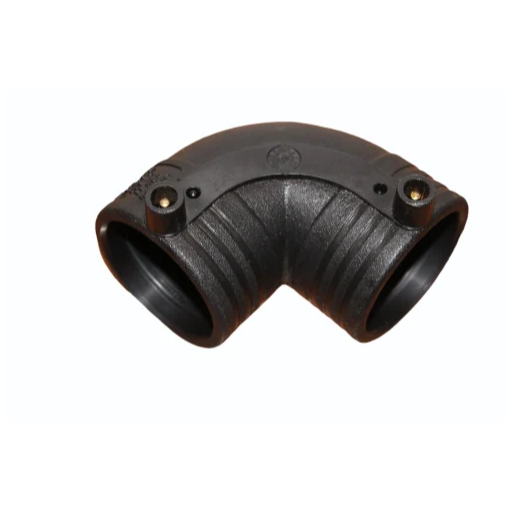
Emerging Trends in Pipeline Technology
Present-day pipeline technology is going through rapid reforms under the influence of innovations. In design and construction pipelines, there exists currently an opportunity to implement preventive maintenance. This trend also registers with IoT devices for real-time monitoring and predictive maintenance. With IoT devices and analytical tools, there is an uninterrupted stream of data on pressure, flow rates, and probable locations of leaks so that the operator can respond to the concern before the incident becomes a failure of great cost. Algorithms based on machine learning are also in use for risk management related to pipeline integrity by analyzing historical data and live data.
Another emerging area of composite materials in pipeline construction is. Composites offer better strength, corrosion resistance, and lighter-than-steel orientation for specialized applications. The use of automation and robotics has increased over recent years for the inspection and repair of pipelines. Robotic crawlers armed with Hi-Definition cameras and ultrasonic capability can inspect hard-to-reach areas along the pipelines, thus reducing human risk and achieving better efficiency.
Further advancements are now taking place in green technologies, including hydrogen-ready pipeline construction and CCS system deployment. These projects align well with the international agenda on sustainability and decarbonization efforts imposed by governments and organizations around the world. Finally, digital twin technology, creating a virtual simulation of pipeline systems, is becoming an increasingly powerful tool that is put to use by operators to optimize performance, analyze scenarios, and support real-time decision-making. These technologies-that in contrast to their opposition-band together offer bright hope for a more responsive, safer, and environmentally friendly pipeline operation.
Expert Opinions on Electrofusion Fittings
An important technology in modern pipeline setups, particularly for polyethylene (PE) pipelines, is said to be electrofusion fittings. Specialists describe how it makes extremely dependable and leak-proof joints using an electrical heating process that is very much under control. This process ensures uniform melting and fusing of the pipe and fitting material so that the grade of connection obtained is considered to be very strong and permanent.
Besides, electrofusion fittings represent the finishing touch wherever precision and lifetime are emphasized, being used in gas and water distribution networks. For suitability purposes, installation in confined spaces is possible; thus, considerable excavation is avoided. Good resistance to environmental stresses, chemical effects, and external pressures nowadays is what manufacturers have looked at to improve in material and production processes, thus improving the outstanding lifetime of the systems.
The installation process must be well prepared and strictly guided to stimulate maximum performance, as recent studies have shown. Cleaning the pipe surface, correct alignment, and adherence to cooling times are extremely important for the success of electrofusion. With further ongoing investigations and supported by smart technologies, including real-time monitoring solutions, the future of electrofusion fittings stands geared toward higher efficiency and digital infrastructure compatibility, thereby cementing their position as pipeline networks of the next generation.
Troubleshooting and Maintenance
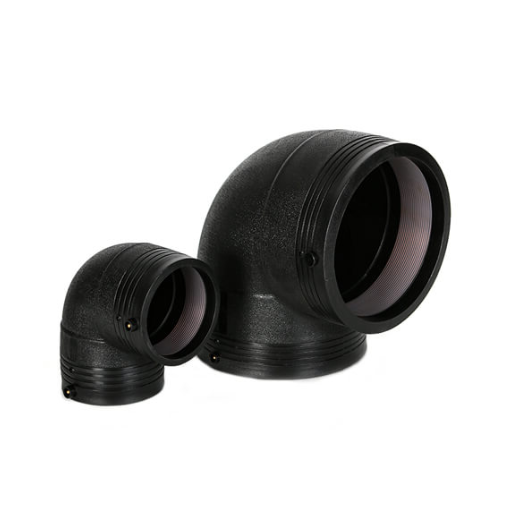
Common Mistakes to Avoid During Installation
- Improper Pipe Preparation: Among many steps, a crucial one frequently ignored is that the pipe ends must be thoroughly cleaned and dried; a proper scraping of the surface to be joined should be performed so as to remove the layer of oxidation. If any one of these conditions is not observed, poor fusion may be established, resulting in mechanical weakness and leakage or even system failure.
- Incorrect Alignment During Fusion: Any misalignment of pipes and fittings during the fusion process can, therefore, weaken the joint, which becomes even more of an issue in pressurized systems where slight misalignments lead to uneven stress distribution and, eventually, premature failure when subjected to load.
- Insufficient Cooling Time: Another usual error committed is to move or stress the pipes before the joint has cooled for the specified period. Such premature handling may destroy the molecular bond in the joint altogether, thus leading to a weak union that will, ultimately, fail over time.
- Damaged Fittings And Tools: Fittings with visible defects or tools with a calibration issue would cause poor fusion; hence, inspection and maintenance of tools, together with checks on fittings, must be conducted to ensure a faultless connection.
- Ignoring Manufacturer Specifications: Each manufacturer will specify, for instance, different temperatures, pressures, or cooling times. Should one deviate from those imposed by the manufacturer, the performance of the system will be at its substandard level and its reliability compromised.
- Neglecting Environmental Conditions: Environmental factors such as temperature, humidity, or wind can considerably influence the fusion. Doing the installations without considering these factors might cause incorrect bonding and joint defects.
Addressing these common types of errors would constitute a step toward ensuring pipeline systems remain safe and efficient over time. In strict adherence to best operating practices, the resulting option gives durability to the system but also lowers the chances of expensive repairs or operational disrupts.
Tips for Maintaining Electrofusion Joints
- Conduct the Inspection Activity regularly: Visually inspect electrofusion joints from time to time to identify early signs of wear, corrosion, or deformation. Employing NDT techniques like ultrasonic testing or radiographic inspection will yield an excellent level of evaluation and will avoid interference with operations.
- Environmental Monitoring Activities: Temperature and moisture directly affect the integrity of electrofusion joints. Joints must be placed and maintained in environments within the requirements for temperature and humidity established by the manufacturers. Another aspect to consider is the storage of pipes and fittings before welding to avoid any contamination.
- Follow Manufacturer’s Specifications: Always follow the specific installation and maintenance instructions given by electrofusion equipment and material suppliers. This includes working within the set parameters of fusion time, pressure, and cooling time. Any deviation may increase the chances of defects.
- Keep Joint Interfaces Clean: Dirt, grease, and other contaminants may interfere with the bonding of electrofusion joints. All surfaces must be thoroughly cleaned with approved solutions and tools before and after welding. During maintenance, exposed joints must also be cleaned to remove any debris that may have accumulated.
- Train Operators and Technicians: In order to maintain the correctness and consistency of electrofusion activities, the complete set of personnel must receive continuous training and certification. Adhering to the most recent techniques and industry standards minimizes human errors and enhances system performance.
- Use Real-Time Monitoring Technology: During installation, real-time monitoring systems can gather valuable readings for temperature, fusion time, and pressure fluctuations so that immediate adjustments can be made, thus avoiding poor-quality bonds that could result from out-of-spec conditions.
- Limit External Stresses on Joints: Avoid imparting electrofusion joints with undue mechanical stresses such as bending, vibration, or sudden temperature variations. Supporting and encasing joints in a stress-free manner improves their life and mitigates the risk of failure.
By adopting these procedures, it will be much more feasible for operators and technicians to further guarantee the very reliability and operational longevity of electrofusion joint systems. A proactive approach to maintenance and installation will guarantee good performance with minimum downtime in the pipeline network.
How to Troubleshoot Installation Issues
Troubleshooting problems in the ancestry of installation requires an approach whereby faults must first be identified and then resolved. A general inspection of the joint and the surrounding components must start under the heading of such an evaluation. Verify aspects of the pipe surface and cleaning operations, as any flaws in cleaning can cause contamination of the surface and eventual joint failures. The surface must be scraped for the oxide layer; if not, the oxidation layer will obstruct electrofusion. Notice visible signs like incomplete fusions or over-formation of beads, which might result from any problems in heat, application, or its alignment.
Next, provide verification of the settings and calibration of the electrofusion machine before use. Reference the manufacturer’s specifications to check that the proper voltage and given fusion cycle times were set during installation. Any deviation from the acceptable range can be detrimental to performance. Analyzing error codes, if produced by the machine, can be directly informative of the nature of some malfunctions or usage errors.
Any environmental factor is capable of affecting installation results. It is necessary to record the conditions prevailing during the fusion process so that inconsistencies may be identified that affect joint formation. Further consider if procedures were correctly followed, such as the proper clamping and alignment of pipes before the fusion cycle was initiated.
Lastly, an effort must be made to keep detailed documentation throughout the troubleshooting process. Data on every pertinent issue—whether related to equipment, materials, or environmental conditions—keeps a record that allows the teams to analyze patterns and prevent future occurrences, thus ensuring proper installation. This systematic approach guarantees that the exact problem is resolved and prevents any integrity issues arising in pipeline systems.
References
Frequently Asked Questions (FAQ)
Q: What is an Electrofusion 90° Elbow?
A: An Electrofusion 90° Elbow is a fitting used in piping systems to create a 90-degree turn, typically made from HDPE (High-Density Polyethylene). This product is essential in various applications, allowing for efficient flow direction changes while ensuring a secure and leak-free connection.
Q: How does the Electrofusion process work with a 90° elbow?
A: The Electrofusion process involves heating the surfaces of the HDPE pipe and the Electrofusion 90° Elbow using electrical resistance. Once heated, the two parts are joined, creating a strong and durable bond. This method is favored for its reliability in high-pressure applications.
Q: What applications commonly use the Electrofusion 90° Elbow?
A: Electrofusion 90° Elbows are widely used in water distribution, gas distribution, and irrigation systems. Their ability to provide a smooth transition in piping systems makes them ideal for various industrial applications as well.
Q: What are the benefits of using an Electrofusion 90° Elbow over traditional fittings?
A: Using an Electrofusion 90° Elbow offers several advantages, including reduced risk of leaks, improved flow efficiency, and simplified installation. Additionally, the electrofusion process eliminates the need for welding or additional fittings, making it a cost-effective solution.
Q: How do I choose the right Electrofusion 90° Elbow for my project?
A: When selecting an Electrofusion 90° Elbow, consider factors such as the material compatibility, pressure ratings, and the specific requirements of your project. It’s also important to ensure that the elbow fits the diameter of the HDPE supply pipes you are using.
Q: Can I use Electrofusion 90° Elbows with other types of materials?
A: Electrofusion 90° Elbows are specifically designed for use with HDPE materials. While they can be adapted for use with other materials, it is crucial to ensure compatibility to maintain the integrity and performance of the piping system.
Q: What is the typical lifespan of an Electrofusion 90° Elbow?
A: The lifespan of an Electrofusion 90° Elbow largely depends on the application and environmental conditions. Generally, when properly installed and maintained, these fittings can last for decades, making them a durable choice in plumbing systems.
Q: Are there any specific installation guidelines for the Electrofusion 90° Elbow?
A: Yes, installation guidelines for the Electrofusion 90° Elbow include ensuring clean surfaces before joining, following the manufacturer’s specifications for heating times, and using appropriate equipment. Proper installation is crucial to achieving a secure and leak-free connection.






